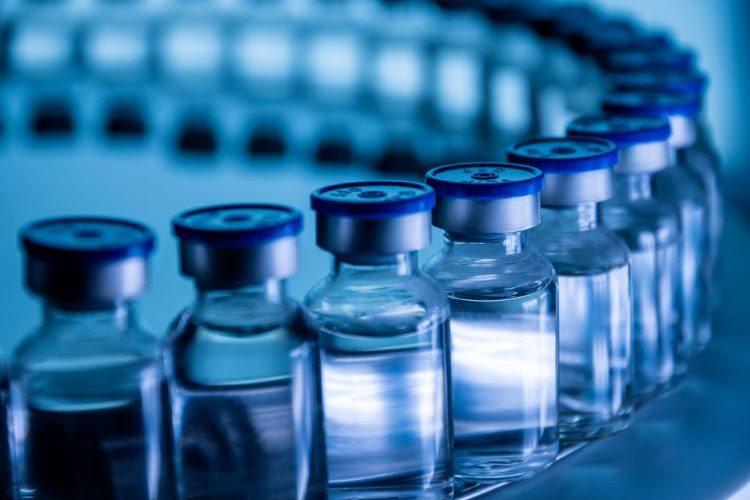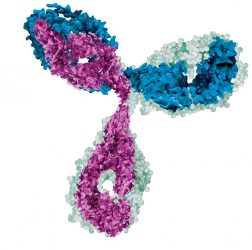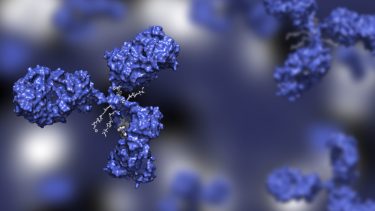The current limitations facing biosimilar products and manufacturers
Posted: 7 June 2021 | Dr Ash Ramzan (Woodley BioReg) | No comments yet
In this article, Dr Ash Ramzan, principal consultant at Woodley BioReg, discusses the five key challenges preventing biosimilars from reaching their full potential.


The European Medicines Agency (EMA) describes a biosimilar as “a biological medicine that is similar to another biological medicine that has already been authorised for use.”1 This similarity is evaluated and established against other registered and established products — referred to as Reference Medicinal Products.
By their very nature, biopharmaceutical products are intrinsically variable and therefore cannot be referred to as ‘generics’ – which is a term applied to pharmaceutical products denoting a ‘sameness’ with each other. However, there are several other terms in current use for biosimilars, including follow-on biologics (FOB), follow-on-protein (FOP) and subsequent entry biologics (SEB).
Biological products are significantly more intricate than pharmaceutical preparations, which result from relatively simple chemical reactions. The complexity of biological products compared to small molecules results from a number of factors unique only to them, including:
- Molecular mass (typically 10 kDa or much more)
- Composition (eg, protein, carbohydrate, lipid, nucleic acid, cell debris)
- Higher order structure (rendering biological function)
- Complex manufacturing operations, processes and controls
- Formulation, including the use of adjuvants.
Given the complex nature and batch-to-batch variability of biological products, both manufacturers and regulators alike appreciate and accept that the manufacturing process, controls, limits and specifications will differ due to the variability of the processes involved – and have expectations set accordingly.
A background to biosimilars
During the late 1980s and 1990s, a range of biological products based around growth hormones and monoclonal antibodies (mAbs) were developed and successfully registered. Given their novel, proprietary and often complex manufacturing processes and applications, the intellectual property (IP) around many of these products was protected by various patents.


During the same period, changes in the regulatory landscape included the development of guidance for Well-Characterised (later renamed Well-Specified) biologics in the US, Comparability Protocols and Equivalence Protocols in the EU.
Whilst these changes in the regulatory requirements were intended primarily to support and facilitate changes to biologics manufacturing processes, they triggered the evolution of the concept of the biochemical bridge whereby a comprehensive analytical (biochemical and biophysical) comparative testing programme could be used as part of justification for demonstration of equivalence or similarity.
Following the expiry of IP protection, others have sought to manufacture and register these products, triggering the refinement of the existing and development of new regulation encompassing the need to demonstrate biochemical and biophysical equivalence in addition to a highly similar physiochemical and biological profile.
An increased interest
Although biosimilar products have been registered and approved for use for over two decades in the EU, the recent COVID-19 crisis has heightened interest in this class of product. While many of the currently approved molecules fall into one or two therapeutic categories, there is growing speculation and excitement on the further potential for biosimilars with increasingly complex structures.
However, there are several limitations surrounding the biosimilars that are currently approved, as well as potential added complications and concerns with multi-subunit, extensively post-translationally modified and lipid-containing products.
The five main barriers
1. Intellectual property surrounding innovator molecules
Given the time and resources required to develop new molecules through clinical studies and commercialisation, it is understandable that companies will wish to ensure a return on their investments following licensure. This is typically achieved through a period of market exclusivity assured through IP protection.
The difficulties in surmounting the next challenges are significant and include detailed understanding of the structure and function relationships of biological molecules”
Biological products — such as monoclonal antibodies, toxins and vaccines — generally require significantly higher levels of investment during development due to their complexities for manufacture and interactions when administered.
Unlike pharmaceutical molecules that are generally pure and comprised of a specific molecular structure and formula, biological molecules are significantly more complex and are defined by the manner in which they are manufactured — for example, using cell lines, fermentation and purification processes etc.
Their properties are determined by the relative mixture and combination of a range of biological molecules (and inevitable impurities), degradation products and inactive molecules. To replicate such a ‘soup’ without details of the cell banks and manufacturing operations — such as process steps, yields, losses etc — is practically impossible without detailed knowledge from the innovator or original manufacturer. Such information is often proprietary and protected by a complex web of IP and limited disclosures to the regulators.
Primarily because of this, it has not been possible to recreate complex biological molecules as easily as it is for pharmaceuticals, thus regulators have sought to define alternative means by which they may be deemed ‘similar’ based on their activity, rather than their detailed structures, purities and functions.
2. Limitations placed on biosimilar interchangeability, substitution, switching and extrapolation of indication
Switching and substitution is the practice of supplying alternative products at the pharmacy level and enables the pharmacist to decide and dispense accordingly. This is not possible for biosimilar products because the manner in which biologics — including biosimilars — are manufactured, purified and formulated plays a significant part in the product’s characteristics, including therapeutically and any adverse side effects. It is widely accepted that this process defines many of the attributes of a biological product.
While the efficacy and general safety in terms of toxicity is assured through the licensing process, one of the key considerations that prevents the interchangeability of biosimilars is the potential for unwanted immunogenicity. The body’s reaction to a potential ‘invader’ can result in the production of antibodies that could impact the therapeutic effect, as well as potentially result in secondary undesirable reactions that require further medical intervention.
However, as the understanding of the mechanisms of action of biological products continues to grow, it has become possible for some limited substitution and interchangeability to be practiced at the clinical and prescriber stage. It should be noted that this has been predominantly for monoclonal antibodies which are known to be less complex — and therefore more predictable in their behaviour — than many other biological molecules. It is not known whether such practices will ever be possible at the pharmacy level.
3. Complex multi subunit or multimodal biologics (eg, antibody-drug conjugates [ADCs] and vaccines)


While some more complex biological molecules have been considered to be ‘biosimilars’ — for example botulinum toxins such as Botox, Dysport, etc — this similarity has been in relation to the biological effects and has the same limitations of switching and interchangeability as other biosimilars.
As a general rule, given the intrinsic variability and complex structure-function relationship of biological molecules, the understanding of complex biologicals — including vaccines and multi-subunit molecules — by the industry and regulatory bodies is severely limited and the potential risks not sufficiently understood to be mitigated.
Additionally, while these products can continue to be developed and registered in their own right, based on a full complement of data, it is not yet possible to register any as a biosimilar on an innovator product.
4. Data requirements for registration, including analytical/biochemical, pre-clinical and clinical information
One of the key advantages of generic pharmaceuticals, and the reasons for their rapid growth and uptake, was the ability to register them without a full clinical development programme. Typically, only bioequivalence and bioavailability data were required.
The situation with biosimilars is not quite as straightforward. Given that there are many contributors to the safety and efficacy of biological products, and that many of these effects cannot be fully or accurately determined through in vitro studies, it is often the case that some degree of clinical equivalence or non-inferiority study will be required to demonstrate that a biosimilar is equivalent to the innovator.
Despite this additional burden, the development and registration of biosimilar products remains an attractive proposition for those manufacturers that are able to make, test and characterise such complex molecules under sterile conditions.
5. Other unknown considerations
Typically arising where the issue has not been seen before, or has not been identified, other unknown considerations are expected to be faced at some time in the future – and be addressed accordingly.
As biosimilar products are an emerging treatment, there are many unknowns. This makes defining regulatory standards and controls difficult. However, as commercial pressures continue, innovation and the drive to reduce the cost of products will see the industry and regulators continue to find solutions to many of the roadblocks and limitations to exploiting them fully.
Final thoughts
The approval of the current crop of biosimilar products is without doubt a significant achievement that has enabled greater patient access to medicine. Approval of biosimilar products in the EU, and globally, will remain a milestone in pharmaceutical development. However, with these achievements come greater challenges. Not only maintaining diligence and patient safety with the currently approved products, but the development of biosimilar registration packages for biological products of increasing complexity.
The difficulties in surmounting the next challenges are significant and include detailed understanding of the structure and function relationships of biological molecules that are comprised of more than one protein molecule, complexed branched sugar chains, lipid bilayer components and the possibility of nucleic acid and cell debris. Qualitative or quantitative variability in any of these components may at best result in loss of biological function, or in worse cases severe and potentially unknown adverse events.
With our current understanding of biological products, and state-of-the-art analytics available to us, it is possible to start to plot a path to continue to deliver on the early success of biosimilars. It goes without saying, however, that caution should be exercised throughout to ensure the correct balance between biosimilar development and patient safety.
About the author
Dr Ash Ramzan is the founder and principal consultant at regulatory consultancy Woodley BioReg and has over 20 years of international experience within the pharmaceutical and biopharmaceutical industry.
Ash has held a number of senior positions in product and clinical development, manufacturing to cGMP compliance, analytical development, quality control and assurance and regulatory affairs.
Reference
- Biosimilar medicines: Overview – European Medicines Agency [Internet]. European Medicines Agency. 2021 [cited May 2021]. Available from: https://www.ema.europa.eu/en/human-regulatory/overview/biosimilar-medicines-overview
Related topics
Antibodies, Biologics, Biopharmaceuticals, Biosimilars, Drug Manufacturing, Industry Insight, Proteins, QA/QC, Regulation & Legislation, Therapeutics









